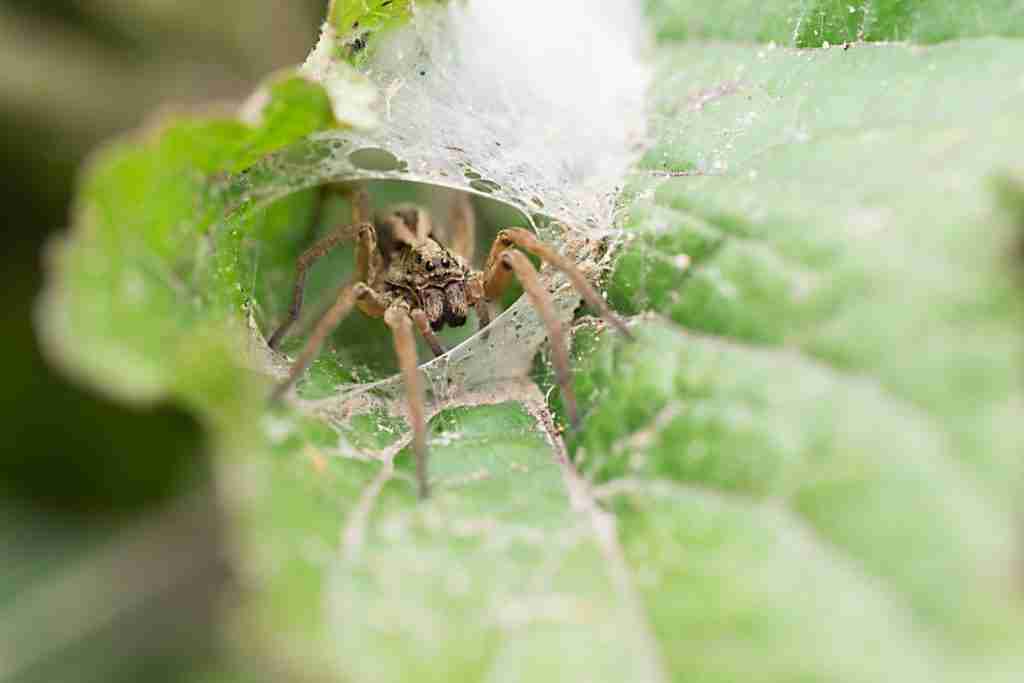
Spider mites are one of the most common insects that enjoy munching and crunching on indoor plants. While they can be extremely frustrating, you can take care of them rather quickly once you know what to do.
To get rid of spider mites, you want to:
- Identify if you are indeed dealing with these insects.
- Wash your indoor plant thoroughly.
- Apply dish soap and water, diatomaceous earth, or other products that will eliminate the bugs.
- Take preventative measures to keep them from coming back.
Here, we help you tackle a spider mite infestation in four simple-to-follow steps, from easily identifying that you are indeed dealing with spider mites to effectively ridding them from your home for good.
Table of Contents
What Are Spider Mites?
Spider mites are tiny little insects that look like spiders. They love to dine on healthy, green plants.
The little creatures are good at hiding, typically camping out underneath the leaves of your plants and spinning webs for protection.
While these little houseplant pests are very tiny and difficult to see with the naked eye, you can identify the problem by keeping a close watch on your indoor plants and waiting to see if little specs crawl across the foliage.
Spider mites are a massive headache. A female spider mite can lay up to 20 eggs per day. Their entire life cycle lasts about two to four weeks, giving each female spider mite the ability to produce hundreds of baby mites all over your plants.
How Do You Get Rid of Spider Mites? (4 Simple Steps)
While these pesky creatures can infiltrate and overrun your potted plants quickly, they can be pretty easy to manage and completely get rid of by following some simple steps.
Step One: Identify the Intruder
Before you can get rid of spider mites, you must know what these little guys look like and be sure they are the insect you are dealing with.
While treatment can look similar for most indoor house infestations, some products and solutions will work much better than others, depending on what insect you are dealing with.
Spider Mite Characteristics
- Less than one millimeter in size
- Vary in color, although they are usually cream or reddish-brown color
- Seed-shaped bodies
- Lay transparent, spherical-shaped eggs
- Spin silk webbing used for protection, which gives them their name
Another way to identify whether or not you are dealing with a spider mite infestation is by inspecting the damage being caused to your indoor plants.
Some common signs you have a spider mite issue include:
- Leaf discoloration: Spider mites will suck the life right out of the houseplant, causing the infested leaf to fade and turn a yellowish color.
- Tiny holes: Spider mites will also chew on your leaves, creating tiny little holes all over the infested plant.
- Webbing: You will be able to see the cluster of webbing left behind by spider mites.
- Rotting spots: The areas where the spider mites chew through and suck sap from the leaves will begin to die, causing rotting spots.
- Stunted growth: The destruction caused by a spider mite damage will stress the affected plant, stunting its growth.
- Wilting leaves: Stress will also cause the leaves to start wilting from the stem.
Step Two: Treat the Infested Area
There are many efficient ways to treat the infected plant and eliminate this unwanted pest without heading straight for the chemical solutions.
Before investing in an insecticide to handle a spider mite takeover, try some of these natural solutions first.
- Rinse them away. Take your infested plant outside and use a hose with a bit of power to wash the little mites away. This efficient way to remove the little bugs provides your plant with a fresh helping of H20.
- Use diatomaceous earth. Diatomaceous earth is a natural product made from fossilized algae that will cut and dehydrate spider mites, killing them and protecting your plant.
- Bring in lacewings and thrips. Enlist help by adding a few extra bugs to the bunch. Lacewings and thrips enjoy the taste of spider mites and will eat the enemy while leaving your plants alone. These bugs are effective at killing mites but are safe around humans.
- Treat with rubbing alcohol. Wipe down your plant leaves with rubbing alcohol. This product is lethal to spider mites but safe on most indoor plants.
- Wash with dish soap solutions. Dish soap is a safe insecticide for humans to use but will rid your plant of spider mites. Mix a little soap in a small bucket of warm water and give your plant a good scrub.
No matter which option you choose, you always want to remove the entire plant from the infested soil and replace it in a new pot with fresh soil, fertilizer, and a nice helping of water. By doing this, you will keep yourself from reinfestation if any eggs survive.
Step Three: Quarantine Your Plants
If you realize your plants have a spider mite problem, you want to remove them from the same room as other plants as quickly as possible. This will help prevent further spreading and reduce the infestation.
Once your plants are mite-free, you can put them back with the rest of the pack, but only after you haven’t noticed any spider mite activity for multiple days.
Step Four: Take Preventative Measures

Once you have a clean plant, free of insects and eggs, you should consider taking preventative measures to keep the problem from coming back.
While there are many great ways to treat spider mite infestations, there are a few that many plant owners will swear by. Here are a few of those options you should consider trying out.
- Use neem oil spray. Neem oil is a natural substance that is great at deterring spider mites from sticking around.
- Don’t over-use nitrogen mixes. Nitrogen is amazing at aiding in a healthy plant, but it also makes the sap taste very sweet, quickly attracting mites.
- Keep up with a good water schedule. Mites love to nibble on dehydrated plants; keeping your plants full of water will deter these guys from hanging around.
- Dust your plants often. Spider mites are attracted to dusty locations because dust tends to dry out the leaves. Keeping your plant clean will keep the insects at bay.
- Avoid excessive heat. If you want to prevent spider mites from showing up, try to keep your plants from hot spots around the house, as these little pests love the warmth.
Step Five: Purchase a Quality Insecticide (Optional)
If all else fails and you simply can’t get rid of the infestation, or, you want to get the job done quickly, you can always opt to buy an over-the-counter insecticide that will kill the spider mites on contact.
You can get these products from various retailers in your area or order them online. Some great options include:
- Bioadvance Insecticide Fungicide Miticide 3-in-1 Insect, Disease & Mite Control, 24 Oz
- Grower’s Ally Spider Mite Control Spray with Rosemary Oil
- Doktor-Doom Spider Mite Knockout, 16-Ounce
Spider Mites FAQs
Now that you know how to get rid of spider mites that are attacking your favorite house plants, here are a few common questions people often ask about these tiny little houseplant pests.
Are Spider Mites Harmful to Humans?
No. Most spider mites you typically find dining on your indoor plants are not known to be harmful to humans.
Where do Spider Mites Come From?
While your infestation could have come from anywhere, spider mites are often found on large plants that aren’t well-kept. These bugs typically come in from outside on pets, shoes, clothing, and other plants.
Do Essential Oils Deter Spider Mites From Eating Plants?
Yes. There are many reasons to believe that some essential oils are very beneficial in treating plants effectively for spider mite infestations. Some great oils to try include eucalyptus oil, rosemary oil, and tea tree oil.
Summing Things Up
Spider mites can wreak havoc on your indoor plants, causing chaos as they eat holes through the leaves and suck the sap right out of them. Luckily, there are plenty of ways to treat your greenery to rid them of the pesky infestation and keep them thriving for a very long time.



